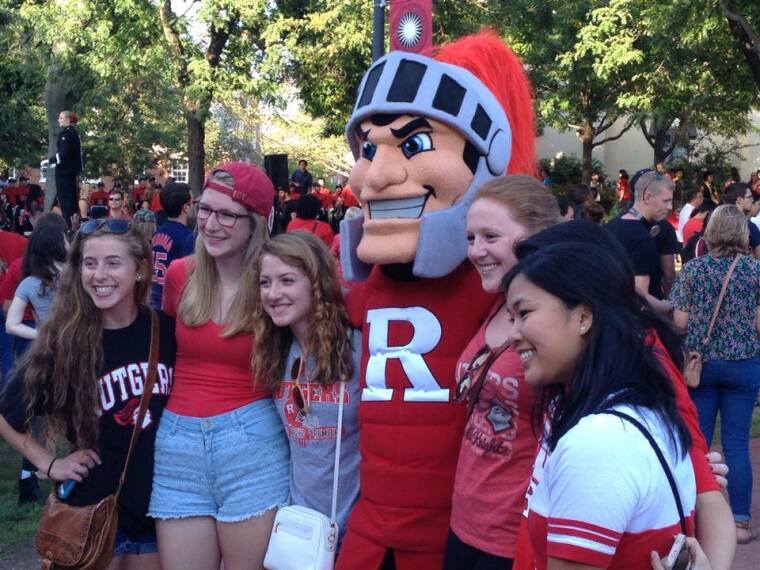At Rutgers, student government votes to add black, Latino, Asian & drag mascots

NEW BRUNSWICK, N.J. (Christian Examiner) -- Black, Hispanic, Asian and drag outfits could soon hang in the closet along the traditional Rutgers University Scarlet Knight costume.
The "Queer Caucus" is one represenative group named by the university's student government in a resolution to produce multiple mascots including black, Latino, Asian and "third-gender" figures in order to " better represent" the diversity of the current student population.
Emmet Brennan, a freshmen student assembly parliamentarian who spearheaded the multiple mascot bill, told The Daily Targum he believes the current 1955 version of the mascot required an update from the pale-skinned and blue-eyed knight.
"Our mascot does not represent how diverse we are as a school," Brennan said he concluded after watching the bushy browed, high cheecked, helmeted figured -- with an exaggerated, comic smile -- cavort around the field at a football game early last fall.
After researching the ethnicities and gender-identities of Rutgers' students, Brennan co-drafted a bill the that leaves it up to various student organizations to decide the physical appearance of additional mascots.
"We would really leave it up to the different student organizations ... and basically the student body as a whole to determine how many knights they'd like and what these knights would represent," Brennan said.
Due to alumni outrage over changes to the school's 140-year old alma mater to include gender-neutral lyrics in 2013, Brennan's bill intentionally kept the original mascot and simply added ethnically-divers alternatives.
"It's not really about taking away from the current mascot we have, but really celebrating that diversity and involving the student body in our mascot," Brennan said. "This bill is about representing how diverse Rutgers is, and that we should take pride in that we're one of the most diverse schools in the nation," Brennan said.
One business major at Rutgers, Sneha Lakhani, told the student paper she believes Rutgers shows diversity in other ways.
"I feel like it's a bit far-fetched, but I appreciate the idea of accepting more," she said. "But I don't feel like (diversity) has to be shown in that manner as well because Rutgers does a good job showing it in every other way."
The bill later passed with support from most of the student assembly's leaders, TDT reported. The Rutger's student assembly is composed of about 50 students, although the number of those voting was not disclosed in the student report, nor the actual vote.
Despite what he indicated was widespread support from the student assembly, Brennan said following publicity of the plan, that despite facing pushback from alumni and some students, he desires to gain support from school administrators in order to solicit funds from university or alumni funding.
One student has suggested the mascot, which does not belong to the school, but was created to further enhance the efforts of its sports teams, has been politicized in order to serve an agenda -- and has created a petition to stop the cause.
Daniel Baran a Rutgers' junior, started a change.org petition to stop the move by the student assembly and in one day got nearly 1,000 signatures.
"A mascot is created solely to be the 'spokesman' for our sports team and in no way is meant to represent the school as a whole," Baran wrote in his petition. "Furthermore, the addition of multiple mascots will by no means create a greater understanding of Rutgers diversity or complete any social agendas."
Baran went on to suggest that creating a closet of costumes would be an expensive venture at what he said is about $10,000 per costume and time, energy, and resources could be better used to address more pressing needs at Rutgers, such as improvements to the bus system to handle a burgeoning student population.
The problem with mulitple mascots, he suggested, could confuse the university's image -- and raise an issue over air time in advertising and during university events.
However, some reports claim that even if the school or alumni object to having multiple mascots, the student government could move forward regardless of administration approval if they could secure alternative funding for the mascot costumes.